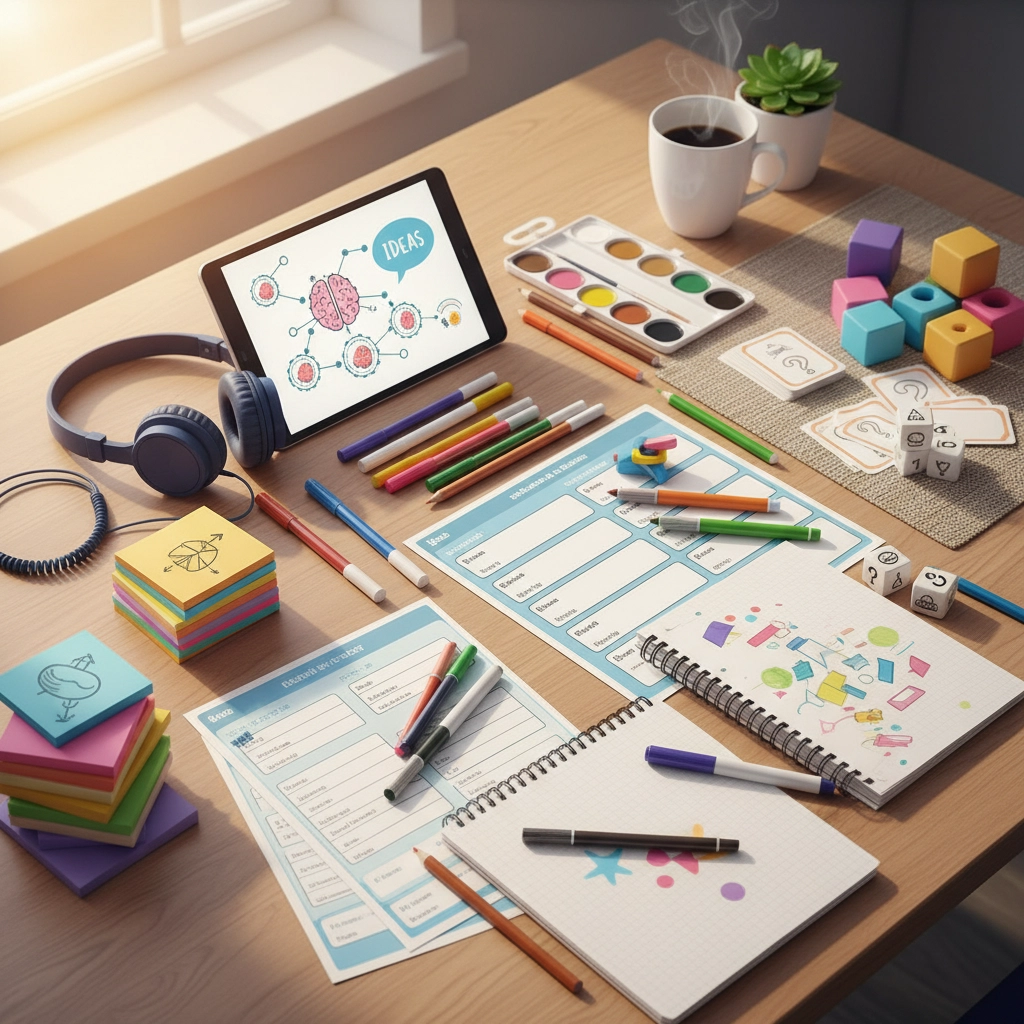Contents
ToggleBuilding a thriving online teaching community isn't just about having great content: it's about creating an environment where your students feel engaged, supported, and excited to learn. But here's the thing: even the most well-intentioned educators fall into common traps that can kill community engagement faster than you can say "unmute."
Don't worry though! If you're making any of these mistakes (and honestly, most of us have), you're not alone. The beautiful thing about online communities is that they're incredibly forgiving: small tweaks can lead to massive improvements in student satisfaction and learning outcomes.
Ready to transform your online teaching community into the engaging, supportive space you always envisioned? Let's dive into the seven biggest mistakes you might be making and exactly how to fix them.
Mistake #1: Talking Too Much Without Creating Space for Connection
You know that feeling when you're nervous or excited about your topic, so you just keep talking? We've all been there. But when you dominate every conversation in your online community, you're accidentally shutting down the very connections you're trying to build.
Your students need time to process, reflect, and most importantly: interact with each other. When you fill every silence with more instruction, you're missing golden opportunities for peer learning and community building.
The Fix That Changes Everything:
- Pause intentionally after asking questions (count to 10 in your head!)
- Create "processing moments" where students can digest information
- Use polls and quick check-ins to gauge understanding
- Establish "student spotlight" sessions where they share insights
- Ask follow-up questions that encourage peer responses, not just answers to you
Remember: your role shifts from being the sole knowledge provider to being the community facilitator. This change alone will dramatically increase student engagement.

Mistake #2: Overwhelming Students with Endless Assignments
Here's a wake-up call: your online course isn't the only thing in your students' lives. When you pile on assignments thinking "more work equals better results," you're actually creating the opposite effect: burnout, resentment, and dropout.
Students consistently report that online courses require significantly more time than traditional classes, often because educators overcompensate for the lack of in-person monitoring.
Your Action Plan:
- Quality over quantity: focus on meaningful, impactful assignments
- Consider that students often review materials multiple times (a 10-minute video becomes 20+ minutes of student time)
- Create intrinsically motivating projects that students actually want to complete
- Use the "Less is More" principle: fewer, deeper assignments that build real skills
- Ask yourself: "Does this assignment move them closer to their goals, or is it just busy work?"
When you reduce overwhelm, you increase completion rates and community participation. It's a win-win that builds trust and momentum.
Mistake #3: Delivering Marathon Lectures That Kill Engagement
Long lectures might work in a physical classroom where you can read body language and adjust in real-time, but online? They're community killers. When you talk for 30+ minutes straight, you lose your audience: and more importantly, you lose opportunities for community interaction.
Extended monologues make students feel like passive consumers rather than active community members.
Transform Your Approach:
- Break content into 5-10 minute chunks maximum
- Use micro-learning principles: one clear concept per segment
- Insert interaction points every few minutes (questions, polls, quick activities)
- Create "discussion breaks" where students can connect with peers about what they just learned
- End each segment with a community challenge or reflection prompt
This approach not only improves retention but also creates natural opportunities for students to engage with each other around your content.

Mistake #4: Failing to Provide Timely Support and Multiple Learning Formats
Nothing kills community momentum like waiting. When students can't access materials, get stuck on concepts, or only receive information in one format, engagement plummets fast.
Your community thrives on momentum: every delay or accessibility barrier creates friction that pushes students away from active participation.
Build Your Support System:
- Deliver all materials at least 48 hours before they're needed
- Provide content in multiple formats: video, audio, text, and visual summaries
- Create a "Quick Questions" space for immediate support
- Establish clear response time expectations (and stick to them!)
- Use templates and checklists to ensure consistent resource delivery
- Designate community champions who can provide peer support
When students feel supported and can access information in their preferred format, they're more likely to engage deeply with both the content and each other.
Mistake #5: Sticking to One-Dimensional Teaching Methods
Variety isn't just the spice of life: it's the lifeblood of online communities. When you rely on the same teaching format week after week, you're essentially asking your community to slowly disengage.
Different learning styles, attention spans, and preferences mean that one-size-fits-all approaches leave most of your students behind.
Energize Your Community:
- Rotate between videos, live sessions, written content, and interactive workshops
- Use visual storytelling to make concepts memorable
- Incorporate gamification elements (points, badges, challenges)
- Create collaborative projects that require peer interaction
- Host "mini-workshops" where students teach each other
- Use breakout discussions and small group activities
When you mix up your methods, you keep everyone engaged while creating multiple touchpoints for community connection.

Mistake #6: Assuming Everyone is Following Along
This might be the most dangerous assumption in online education: thinking that silence means understanding, or that visible presence equals engagement. Online environments make it incredibly easy for students to appear present while being completely lost or distracted.
When you assume engagement without verifying it, you leave students behind and create gaps in your community foundation.
Keep Everyone Connected:
- Use regular "pulse checks" throughout your sessions
- Implement interactive elements that require active participation
- Create accountability partnerships within your community
- Ask specific questions that reveal understanding levels
- Use breakout groups to surface confusion or questions
- Establish "confusion signals" students can use without embarrassment
Active verification of engagement not only improves learning outcomes but also helps struggling students feel seen and supported by the community.
Mistake #7: Running a Disorganized, Hard-to-Navigate Community
Poor organization is like having amazing content locked in a maze: your students want to engage, but they can't figure out how. When your community structure is confusing, students waste mental energy on navigation instead of learning and connecting.
Disorganization creates unnecessary barriers that prevent the natural flow of community interaction.
Create Your Roadmap to Success:
- Design a clear, intuitive navigation system
- Provide a "Community Orientation" that shows students exactly how to participate
- Create consistent naming conventions and posting schedules
- Use pinned posts and announcements strategically
- Develop easy-to-follow templates for common activities
- Establish clear community guidelines and expectations upfront
- Choose platforms that prioritize user experience over complexity
When your community is well-organized, students can focus their energy on learning and connecting rather than figuring out where things are or how to participate.
Your Next Steps: Building the Community You've Always Wanted
Here's the exciting part: you don't need to fix everything at once. Pick one mistake that resonates most with your current challenges and focus on implementing those solutions this week. Small, consistent improvements create compound results in community engagement.
Remember, every adjustment you make isn't just about better education: it's about creating a space where your students feel valued, supported, and excited to show up. That's the kind of community that transforms lives and builds lasting impact.
Ready to turn your teaching expertise into a thriving online community? The mistakes you've been making aren't failures: they're stepping stones to creating something truly extraordinary. Your students are waiting for the engaged, supportive community you're capable of building.
The question isn't whether you can fix these issues: it's how quickly you'll start seeing the results when you do.
Join the Teacherpreneurs Community for Free
You do not have to build alone. If you want step-by-step support, practical resources, and a safe place to connect with fellow teacherpreneurs, join us.
What you will get:
- Step-by-step, beginner-friendly guidance from idea to launch and beyond
- Clear help choosing your niche and growing your audience
- Practical templates, checklists, and resources to avoid common mistakes
- A supportive, nonjudgmental community of teachers at every stage
- Networking, feedback, and collaboration with fellow teacherpreneurs
Ready to turn your skills into an online business with more freedom, income, and impact? Join free now: Teacherpreneurs on Skool. Click "Join Group" now, introduce yourself, and start simple, build momentum, and grow.





